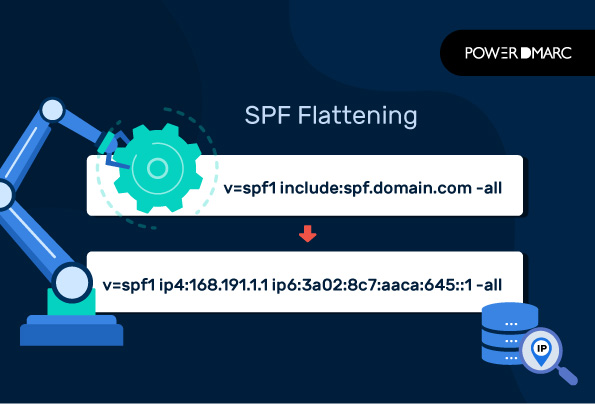Reasons why to avoid SPF Flattening
Sender Policy Framework, or SPF is a widely acclaimed email authentication protocol that validates your messages by authenticating them against all the authorized IP addresses registered for your domain in your SPF record. In order to validate emails, SPF specifies to the receiving mail server to perform DNS queries to check for authorized IPs, resulting in DNS lookups.
Your SPF record exists as a DNS TXT record that is formed of an assemblage of various mechanisms. Most of these mechanisms (such as include, a, mx, redirect, exists, ptr) generate DNS lookups. However, the maximum number of DNS lookups for SPF authentication is limited to 10. If you are using various third-party vendors to send emails using your domain, you can easily exceed the SPF hard limit.
You might be wondering, what happens if you exceed this limit? Exceeding the 10 DNS lookup limit will lead to SPF failure and invalidate even legitimate messages sent from your domain. In such cases the receiving mail server returns an SPF PermError report to your domain if you have DMARC monitoring enabled.This makes us come to the primary topic of discussion for this blog: SPF flattening.
What is SPF Flattening?
SPF record flattening is one of the popular methods used by industry experts to optimize your SPF record and avoid exceeding the SPF hard limit. The procedure for SPF flattening is quite simple. Flattening your SPF record is the process of replacing all include mechanisms with their respective IP addresses to eliminate the need for performing DNS lookups.
For example, if your SPF record initially looked something like this:
v=spf1 include:spf.domain.com -all
A flattened SPF record will look something like this:
v=spf1 ip4:168.191.1.1 ip6:3a02:8c7:aaca:645::1 -all
This flattened record generates only one DNS lookup, instead of performing multiple lookups. Reducing the number of DNS queries performed by the receiving server during email authentication does help in staying under the 10 DNS lookup limit, however, it has problems of its own.
The Problem with SPF Flattening
Apart from the fact that your manually flattened SPF record may get too lengthy to publish on your domain’s DNS (exceeding the 255 character limit), you have to take into account that your email service provider may change or add to their IP addresses without notifying you as the user. Every now and then when your provider makes changes to their infrastructure, these alterations would not be reflected in your SPF record. Hence, whenever these changed or new IP addresses are used by your mail server, the email fails SPF on the receiver’s side.
PowerSPF: Your Dynamic SPF Record Generator
The ultimate goal of PowerDMARC was to come up with a solution that can prevent domain owners from hitting the 10 DNS lookup limit, as well as optimize your SPF record to always stay updated on the latest IP addresses your email service providers are using. PowerSPF is your automated SPF flattening solution that pulls through your SPF record to generate a single include statement. PowerSPF helps you:
- Add or remove IPs and mechanisms with ease
- Auto update netblocks to make sure your authorized IPs are always up-to-date
- Stay under the 10 DNS lookup limit with ease
- Get an optimized SPF record with a single click
- Permanently defeat ‘permerror’
- Implement error free SPF
Sign up with PowerDMARC today to ensure enhanced email deliverability and authentication, all while staying under the 10 DNS SPF lookup limit.
- What Is a Baiting Attack? Types and Prevention - September 29, 2025
- What Is Caller ID Spoofing? Detection and Safety Tips - September 29, 2025
- How Long Does DNS Propagation Take? Tips and Checks - September 29, 2025
